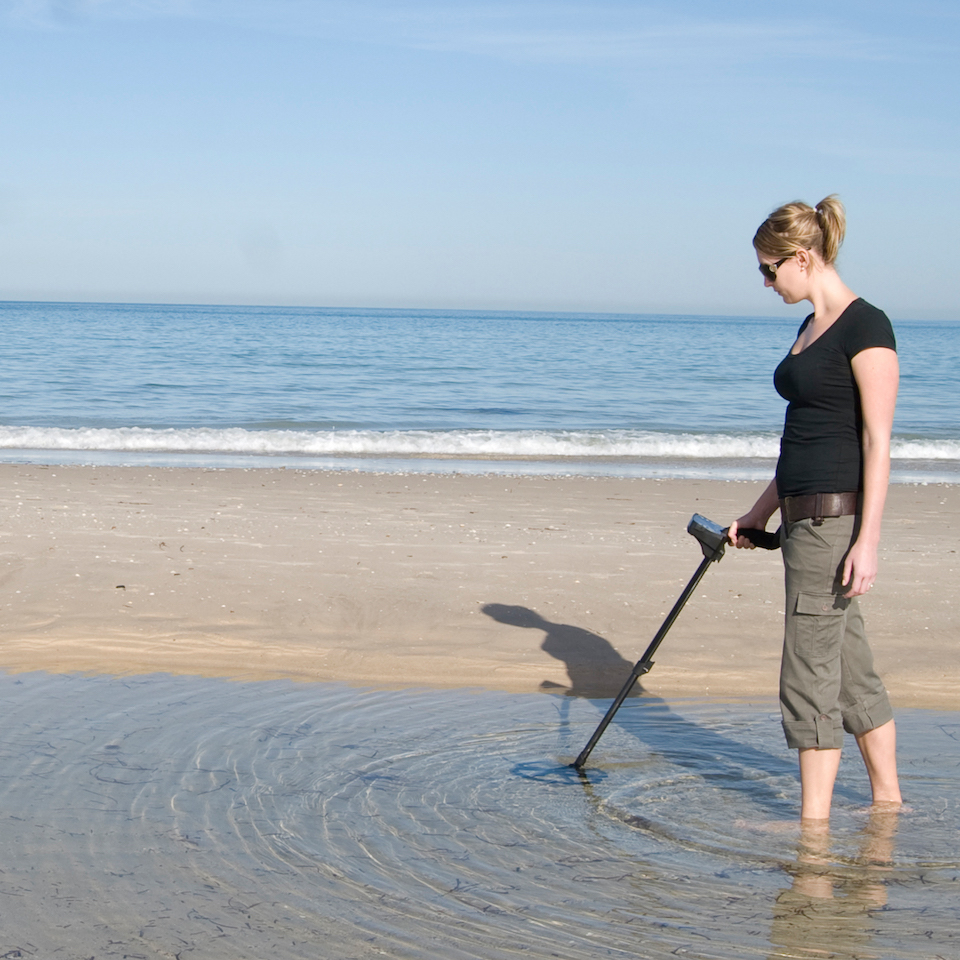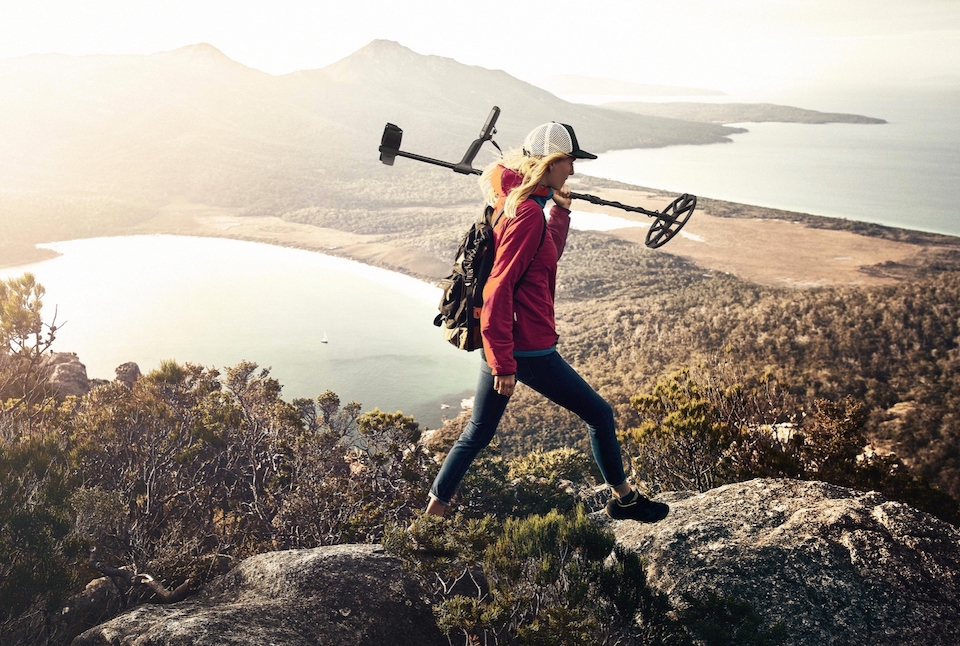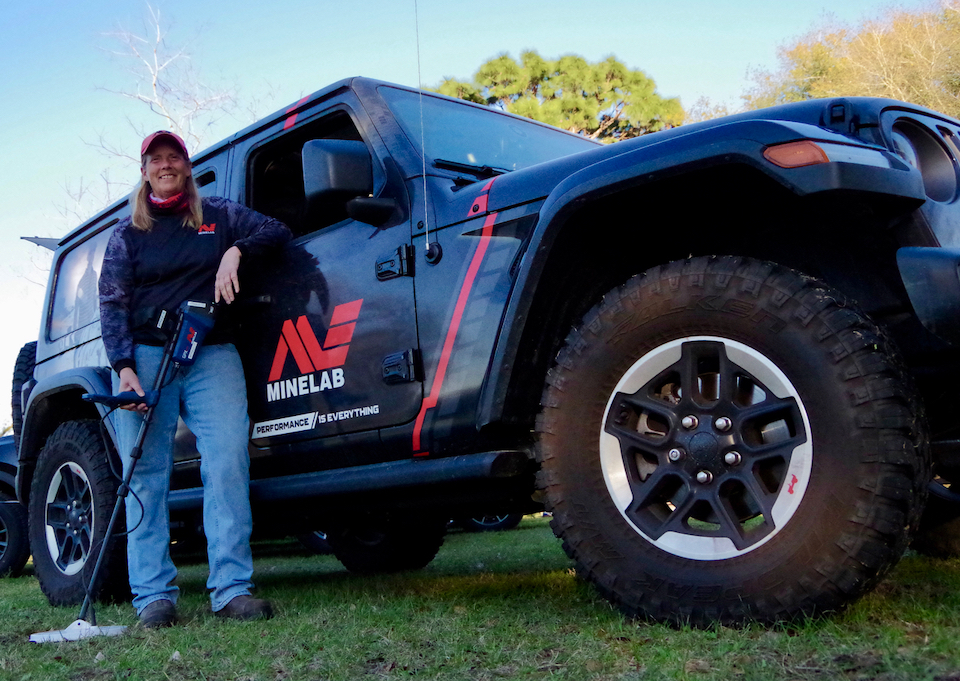Chicago, IL (March 3, 2020) – More and more popular television shows are depicting the lure of treasure hunting. Untold wealth buried centuries ago hundreds of feet deep on an island, Civil War gold lost in the depths of Lake Michigan, sunken 16th century Spanish galleons off the Florida coast, strongboxes stolen off of stage coaches and buried, and lost mines in the far west are just a few of the dreams which fill the heads of many treasure hunters both old and young.
The unfortunate reality is that time and expense place some of these fantastical searches within reach of just a tiny percentage of the population. For those willing to scale back ambition and expectations to a more reachable level, however, similar experiences are certainly available to the average person. This is where an ordinary metal detector comes into play. With one of these machines and a few accessories, real treasure can be found by people of all ages.

To begin in this great hobby, the first item needed is a metal detector. Over the last five or six decades, many different models of detectors have shown up in the hands of treasure hunters. Many of these models and brands have come and gone. One brand has not only survived, but flourished, consistently bringing forth new and improved technologies that improve the detecting experience by increasing results and appealing to an ever-expanding group of treasure-hunting enthusiasts.
Anyone interested in starting the hobby of searching for lost or hidden treasures would do well to familiarize themselves with the offerings of Minelab. Two of its most popular lines of detectors are the VANQUISH and EQUINOX series. Both are simple to understand and operate, and feature Multi-IQ Simultaneous Multi-Frequency technology. The benefit of Multi-IQ is that it searches with multiple frequencies at the same time to allow hunters to find any metal objects – coins, jewelry, relics, and other items – in any soil conditions.
Given their simple, results-oriented performance and consumer-friendly pricing, VANQUISH detectors are extremely popular choices with beginning and novice detectorists. Meanwhile, lightweight and powerful EQUINOX Series detectors remain simple to use out-of-the-box, but step up performance and include additional features for more advanced detectors. It’s proven a powerful and popular combination; the Minelab EQUINOX 800 has earned the distinction of being the world’s best-selling detector since its introduction three years ago.

When purchasing your first detector, locate a dealer nearby and visit them. A dealer can allow you to try different models, teach you how to use them, answer any questions you may have (before, during and after your purchase), and even teach you how to properly retrieve items you find in the ground. While computers and catalogs can offer the same items, you won’t get the personal service you’ll receive from a dealer. That personal service is worth it, even if you end up paying a couple dollars more.
Once you have your first machine, there are a few more items you’ll need to begin your new hobby. First is a digging tool of some kind to unearth your treasure. This can be as simple as a flat-blade screwdriver or a garden trowel. Most detectorists use a digging tool made specifically for use with a detector. Another needed item is a pouch of some kind to hold your finds. A nail apron often can be acquired free from a local hardware store. Coin pouches which have belt loops and usually a couple of openings – one zippered to separate and secure your good finds from the trash – can be purchased from your dealer.
Another accessory, which could be considered optional, but is used by almost everyone with a detector, is a set of headphones. Most of these wire directly into the detector, but wireless Bluetooth earphones can be purchased which work with many higher quality machines, including most Minelab VANQUISH and EQUINOX models. Wireless earphones are great if you hunt in woods or other areas where a cord can easily get tangled and become a source of frustration. Headphones allow detectorists to more easily hear signals from smaller or deeper targets, while lessening outside noise from common sources like wind and nearby traffic.
One final accessory, which is also optional but highly recommended, is a small item called a pinpointer. These are around eight inches long, an inch or so in diameter, and often of a bright color to make it easier to find if you lay it down in grass or leaves. This is basically a mini detector, which helps the user locate small items in a hole, or in the material removed from a hole. A pinpointer is a solid investment, especially after one learns how difficult it can be to locate small treasures when coated with dirt or mud.

Once you have all of your equipment, you are ready to start. Usually, the first place to begin detecting is in your own yard. If it is 25 years or older, it probably contains lost coins, toys, and other metal items for you to find. Practice pinpointing the object and retrieving it properly (ask your dealer to show you the correct way to dig). Always fill your holes and carry out any trash with you. Once you have some experience in your own yard, ask your neighbor or relatives if you can search theirs. No matter where you hunt, always get permission before beginning.
Debbie Smikoski is an expert detectorist who travels around the country for Minelab helping both beginning and experienced treasure hunters better understand their machines so they can experience better results and more fun in the field. She says one of the best things a beginning detectorist can do is set up a “test garden” in their yard. “Grab some old jewelry, various coins, nails, bottle caps and other metal objects and put them in the ground at various depths,” offers Smikoski, who advises that each item be marked with a piece of paper containing the name of the object and the depth at which it’s buried. “Practice detecting each item, taking note of the sound each item makes, as well as the numeric value your machine is returning on screen. It won’t take long and you’ll gain confidence in knowing what your detector is telling you,” she adds. “You’ll quickly learn what common items like pennies, quarters, nails, bottle caps, pull tabs, and gold rings sound and look like on your machine. It’s a fun process that will give you more confidence and save you a lot of time you’d otherwise spend digging ‘trash’ once you take to the field for a real hunt.”
Once you’ve familiarized yourself with your machine, you should never run out of places to detect. Yards, parks, school playgrounds, beaches, campgrounds, and old house sites are just a few popular and potentially productive detecting locations you can probably find nearby. Remember to always ask for permission before you hunt, and always fill your holes.

Looking for even more fun and help in shortening your learning curve? Local detecting clubs provide great opportunities for getting to know other detectorists in your area. Such clubs often host seeded hunts and other events. The best way to find one of these clubs or hunts in your area (or elsewhere), is to simply search “Metal Detector Hunts and Clubs” on the internet. Your local metal detector dealer will also be able to advise of any clubs or organized hunts in your area, and they may even have their own events planned and scheduled.
While you continue enjoying and learning from your own regular detecting activities, a seeded hunt offers beginning and even experienced detectorists many unique advantages. Treasure in the ground is guaranteed, there is usually very little trash to contend with, you don’t need to secure permission before hunting, you have a good chance of winning some prizes, and you’ll be surrounded by passionate people who are usually willing to share their experience and help you become a more effective treasure hunter.
Over the course of the COVID-19 pandemic, countless Americans have discovered – and rediscovered – many new and rewarding outdoor activities. Consider putting metal detecting at the top of your list. Unlike hunting and fishing, metal detecting can take place almost any time throughout the year, and there’s no license required. It can be done by one’s self or with friends and family, and it can also be a good source of exercise. Perhaps best of all, however, is that the rewards are real; the treasures are yours to keep.
The Women's Outdoor News, aka The WON, features news, reviews and stories about women who are shooting, hunting, fishing and actively engaging in outdoor adventure. This publication is for women, by women. View all posts by The WON